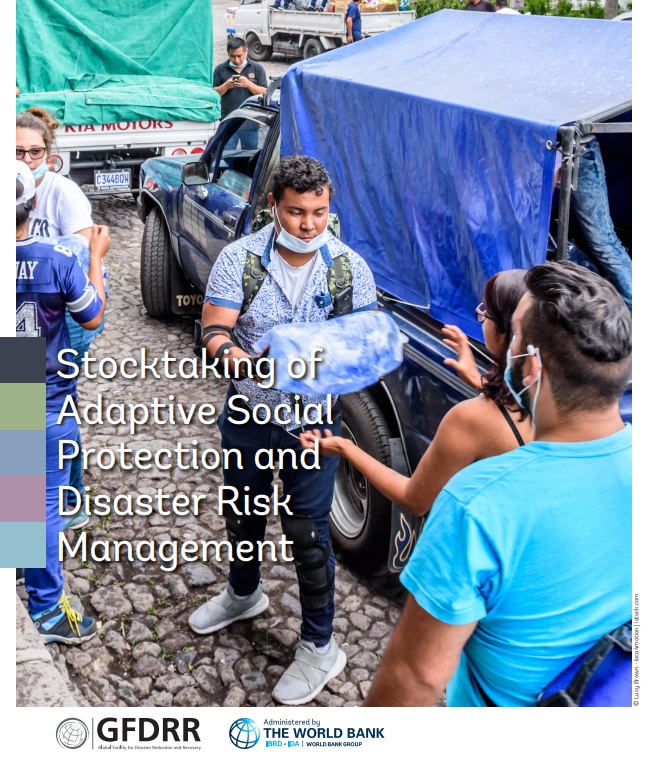In today’s global environment, countries face various shocks, such as natural hazards, economic and health crises, conflict, violence, and forced displacement. Disasters triggered by natural hazards cause billions of dollars in damage per year, and these disasters, and their costs, are increasing because of population growth, rapid and unplanned urbanization, low quality infrastructure, and ineffective disaster risk governance. Climate change is expected to increase the frequency and intensity of hydro meteorological natural hazards, exacerbating disaster damages and losses and disproportionately affecting low-income countries. The objectives of this note are to provide a brief overview of the ASP concept and framework, outline synergies between ASP and disaster risk management (DRM) to build resilience to disaster and climate shocks and highlight current practices that take advantage of synergies between SP and DRM to develop and implement components for effective ASP systems. The note is based on a review of the GFDRR’s portfolio of grants supporting DRM and SP activities. The case studies highlight the operational experiences of World Bank–financed projects that have benefitted from GFDRR grants to contribute to risk-informed ASP. These experiences are expected to help DRM and SP practitioners and policy makers initiate discussions and design ASP programs that increase disaster resilience.
Stocktaking of Adaptive Social Protection and Disaster Risk Management
December 14, 2022

